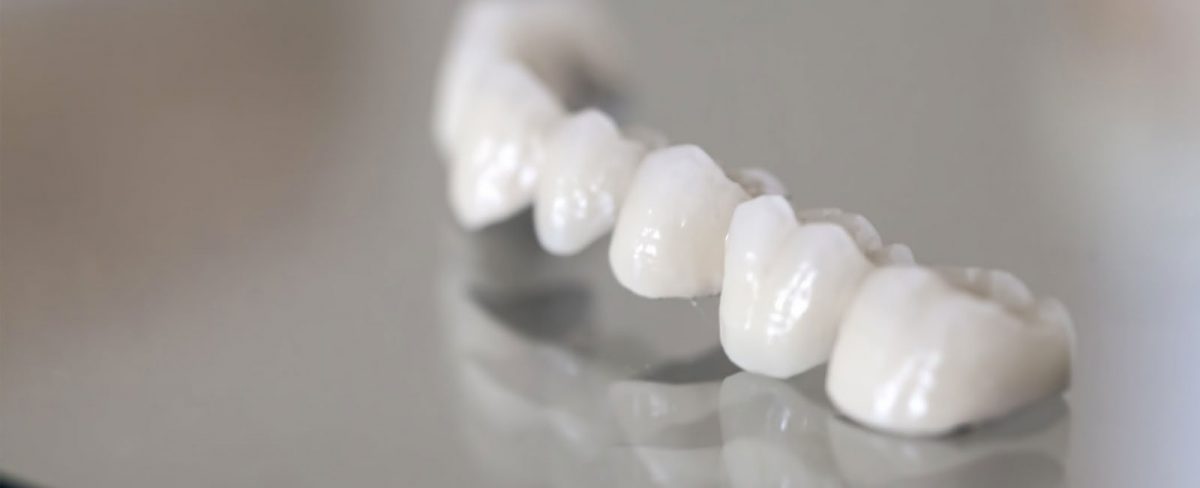A dental bridge is a restoration that replaces one or more missing teeth. It extends across an area that has no teeth and is typically made up of an artificial tooth fused between two crowns. Bridges are made from gold, metal alloys, porcelain or a combination to ensure that they are strong and durable. The process of creating a bridge begins by creating abutments out of your existing teeth where the bridge will be attached. This process is identical to how crowns are prepared (see crowns). The dentist will often remove and replace any old restorations in these teeth to ensure that there will be no decay present underneath the bridge. These are called build-ups. After the abutments have been created, a mold is taken of the area which is sent to a dental lab. The lab is able to use the mold to create a custom bridge that will fit properly and will feel like your natural teeth. The bridge consists of two crowns on either end to place the abutments, and a pontic – a solid tooth shaped piece – that is the new tooth replacing your missing one.
We will then fit you with a temporary bridge while we wait for the lab to craft your permanent bridge. This will protect the abutment and exposed gum area and look more appealing than having a missing tooth. When the permanent bridge has been created, we will have a follow-up visit to seat the bridge. It will be placed on the abutments, and the dentist will then use an adhesive for the final placement of the bridge.
The bridge may take a while to get used to, but after a few days, it should feel like your own teeth. You should eat soft foods for the first few days. After a short while, you will be able to eat whatever you want with no issues. If you are missing a tooth, you should strongly consider having it replaced, because missing teeth can cause structural changes to your mouth and jaw, as well as making it difficult to eat or speak properly. Set up an appointment today to restore your smile.


